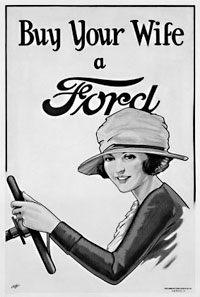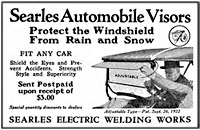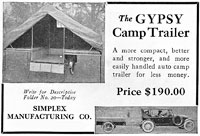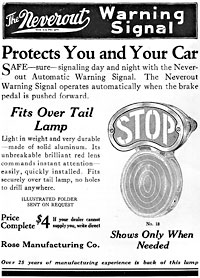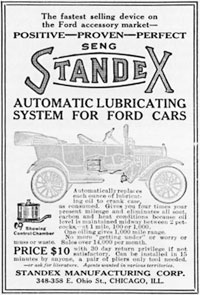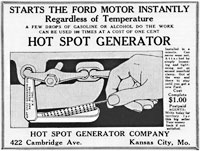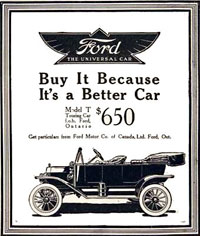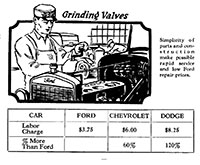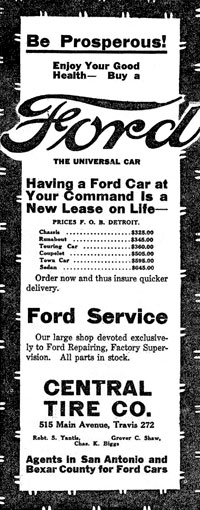Founded 1975
Published by the T Fords of Texas, San Antonio
2 CENTS
A Very Brief History of the Ford Model T
The Ford Model T was introduced in September 1908 at a price of $850.00. It was the 20th design created by the Ford Motor Company, which was started in 1903. Not all 20 designs were actually built. The T built on the success of the Model S, introduced in 1907 at $700, of which 3,750 were made and the Model N, introduced in 1906 at $500, of which 7,000 were built. Since creating his first company, the Detroit Automobile Company in 1899, and it's successor, the Henry Ford Company, in 1901, Ford had been relentlessly trying to introduce not a cheap car but a great car that could be built inexpensively. He hit the mark with the Model T. It was by no means an inexpensive car to buy in 1909 but its undeniable virtues - strength, size and power - allowed it catch on with the public and become and become extremely popular. Some 12,000 were built in the first year alone. The car had a number of technical break throughs,that brought about its meteoric rise that caused it to dominate the automobile world. It featured one of the first four cylinder engines to be cast en bloc which is to say in one piece. Ford also used an innovative alloy called vanadium steel, over three times stronger than regular steel, for the chassis and axles. The Model T had the unbeatable qualities of being extremely durable, easy to work on and, very significantly, easy to manufacture.
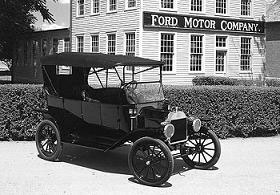
As demand for the Model T soared, Ford and his employees began looking for ways to speed up production. What evolved was the mass production line. Up until 1913, the Model T was essentially an assembled car, with most of its mechanical parts, including the engine, transmission and chassis being supplied by the Dodge Brothers. In a brand new facility paid for from profits on the Model T, by now the only product being made by the company, the Ford Motor Company began producing its own parts, using brand new techniques that drastically reduced the amount of time it took to build the car. Key to this was the rigorous standardization of measurements and parts. Everything had to fit together perfectly each time or the whole process would grind to a halt. Never before had something so complex been built with such speed and efficiency. Ford was able to build more Model Ts and sell them for less. The price fell from $550.00 in 1913 to $440.00 in 1915, when over half a million Model Ts were made.
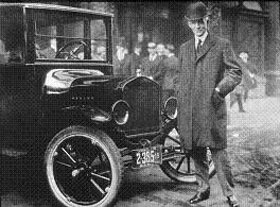
Another key to the Model T's success was its versatility. Over the years a wide range of bodies were placed on the accommodating chassis of the Model T. Open top coupes and sedans came first, then pick-ups and flat bed trucks. Depot hacks, or small buses were also developed as was a heavy duty truck version called the TT which had a stronger rear axle and different gearing ratios to allow them to haul heavier loads than a standard Model T. In time closed coupes and sedans were also made. A whole sub industry arose to supply the little extras drivers might want, as the cars that came from the factory were fairly stripped of luxuries. The Model T was also converted into a racing machine, with aerodynamic, light weight bodies far removed from the everyday machines roaming the nation's growing network of roads.
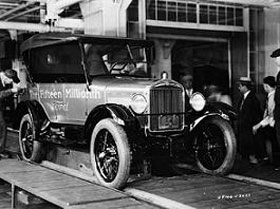
While there were any number of improvements to the Model T over its 19 year production life, what is even more startling is how much never changed. The car retained a 99 inch wheelbase with 30 inch wheels and it's rugged 4 cylinder 20 HP (horse power) engine. While certain improvements, such as a starter motor and a redesigned radiator shell were added, the Model T of 1927 was remarkably similar to the 1908 original, especially under the skin. What had changed was that the road system had changed from rutted dirt roads to smooth asphalt. Speed of travel was now much faster and Ford's competitors were offering more modern vehicles with better engines, transmissions and brakes. Finally, Ford, who always thought his Model T was the ultimate expression of the automobile, the universal car, was obliged to accept the inevitable and cancel production in 1927 in order to supply a more up to date car. Contrarian as ever, Ford called it the Model A, maybe because he knew there really never could be a true successor to his beloved Model T.




